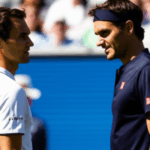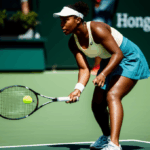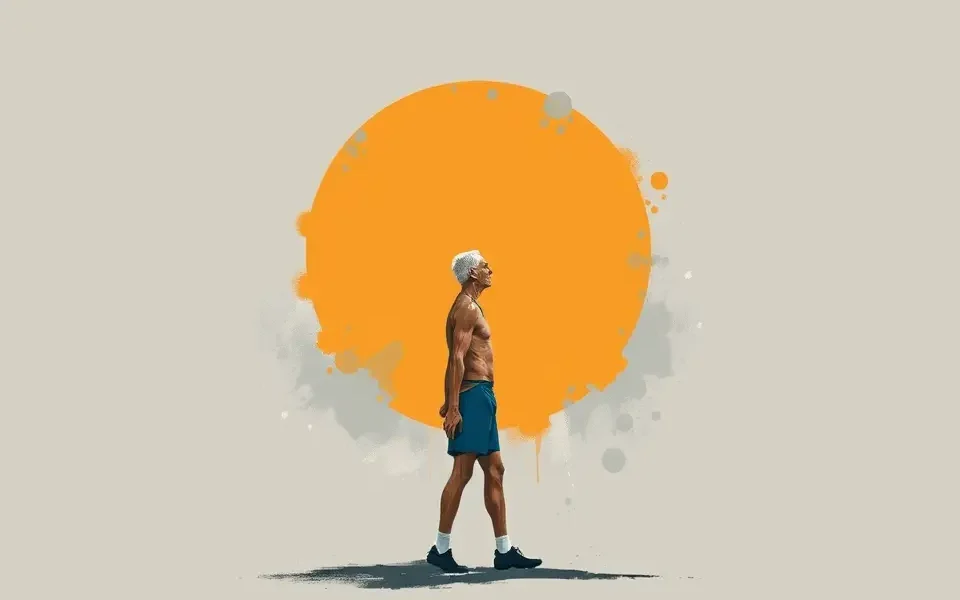Novak Djokovic, a name synonymous with tennis greatness, has undeniably etched his name into the annals of sporting history. With a record-breaking 24 Grand Slam titles and a reign as world number one for an unprecedented number of weeks, his achievements are a testament to his unwavering dedication, exceptional talent, and relentless pursuit of perfection. However, as he navigates the twilight of his career, questions arise about whether his extraordinary longevity is, paradoxically, presenting him with unique challenges.
The Relentless March of Time
Nikolay Davydenko, a former world number three, has astutely observed that Djokovic is, in essence, battling against time itself. As Djokovic approaches his late 30s, the physical demands of professional tennis become increasingly difficult to overcome. The tour’s grueling schedule, intense training regimens, and the constant pressure to perform at the highest level take a toll on the body, making it harder to recover from injuries and maintain peak fitness.
Andre Agassi echoed this sentiment, suggesting that Djokovic’s biggest challenge might not be a decline in capability but rather a depletion of energy. Agassi highlighted the emotional toll of competing at the highest level, especially with the absence of long-time rivals like Roger Federer and Rafael Nadal.
Echoes of Federer and Nadal
Davydenko draws parallels between Djokovic’s quest for longevity and those of Federer and Nadal. Federer, who retired at 41, battled persistent knee problems in his final years, while Nadal has struggled to regain his form after a hip injury. These examples serve as cautionary tales, highlighting the physical challenges that even the greatest players face as they age.
Djokovic’s ambition to extend his career into his 40s, mirroring Federer’s longevity, is a testament to his unwavering desire to compete and win. However, as Davydenko points out, the rigors of modern tennis make it essential for players to manage injuries and adjust their schedules to prolong their careers.
The Weight of Expectations
Djokovic’s sustained dominance has created a unique set of expectations. Having consistently reached the pinnacle of the sport, any perceived dip in performance is met with increased scrutiny. Fans and pundits alike analyze his every move, searching for signs of decline.
This intense pressure can be both a motivator and a burden. While it can drive him to push his limits and strive for further greatness, it can also create added stress and anxiety, potentially affecting his on-court performance.
The Shifting Landscape of Competition
The rise of young, hungry players like Carlos Alcaraz and Jannik Sinner presents a new challenge for Djokovic. These athletes possess exceptional talent, athleticism, and a fearless approach to the game. Their emergence signals a changing of the guard, and Djokovic must adapt his game and strategy to remain competitive against this new generation.
His loss to Sinner at the Australian Open earlier this year serves as a stark reminder that his dominance is not guaranteed. As the younger players continue to improve and gain experience, the competition for major titles will only intensify, making it increasingly difficult for Djokovic to maintain his position at the top.
The “Villain” Narrative
Despite his unparalleled success, Djokovic has often struggled to win over the hearts of fans in the same way as Federer and Nadal. Some observers have noted that Djokovic’s Serbian background, combined with perceived arrogance and on-court outbursts, have contributed to a “villain” narrative that has dogged him throughout his career.
His controversial stance on vaccination, particularly his refusal to be vaccinated against COVID-19, further damaged his public image. This decision led to his deportation from Australia in 2022 and prevented him from competing in several other tournaments. While Djokovic has maintained that his stance is based on personal principles, it has alienated some fans and drawn criticism from various quarters.
The Fedal Factor
Another factor contributing to Djokovic’s image challenges is the “Fedal” dynamic – the long-standing rivalry and mutual respect between Federer and Nadal. Many tennis fans had already invested their loyalty in one of these two players before Djokovic emerged as a dominant force. As a result, he was often viewed as an outsider, disrupting an established order.
While Djokovic has earned the respect of his peers and many within the tennis community, he has struggled to cultivate the same level of widespread adoration as Federer and Nadal. This lack of popularity, whether justified or not, has added another layer of complexity to his career.
The Path Ahead
Despite the challenges he faces, Djokovic remains a formidable force in men’s tennis. His recent Olympic gold medal win in Paris this year demonstrates his unwavering commitment to the sport and his ability to rise to the occasion. As he looks ahead to 2025, he will undoubtedly be motivated to continue breaking records and adding to his already impressive legacy.
To prolong his career and remain competitive, Djokovic may need to make adjustments to his schedule, prioritize his health and fitness, and strategically select the tournaments he enters. He may also need to embrace new coaching strategies, as evidenced by his addition of Andy Murray to his coaching team.
Redefining Success
Ultimately, Djokovic’s success in the twilight of his career may not be solely measured by Grand Slam titles or weeks spent at number one. Instead, it may be defined by his ability to adapt, overcome challenges, and continue to compete with passion and grace.
Whether he can defy the odds and continue his reign at the top remains to be seen. But one thing is certain: Novak Djokovic’s journey is a testament to the power of human will and the enduring pursuit of excellence. His story serves as an inspiration to athletes and fans alike, reminding us that even the greatest champions face obstacles and that true greatness lies in how we respond to them.








No Comment! Be the first one.